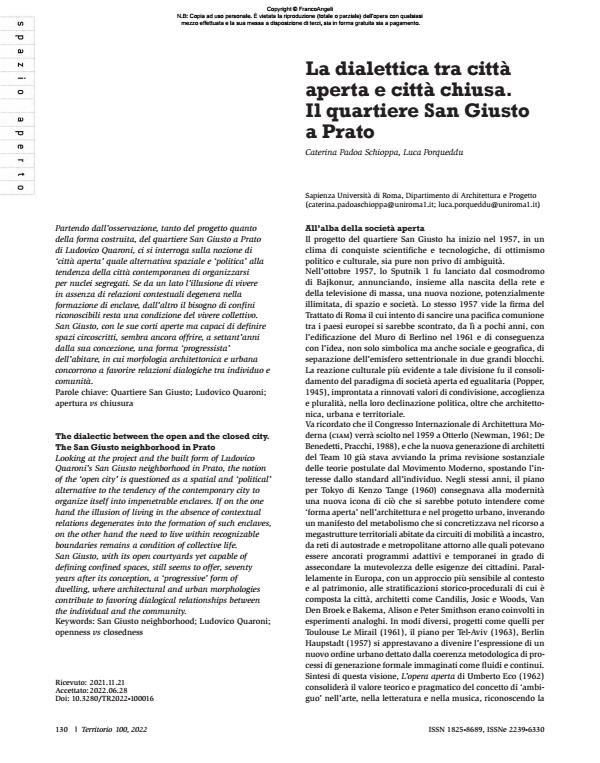The dialectic between the open and the closed city. The San Giusto neighborhood in Prato
Journal title TERRITORIO
Author/s Caterina Padoa Schioppa, Luca Porqueddu
Publishing Year 2022 Issue 2022/100
Language Italian Pages 12 P. 130-141 File size 751 KB
DOI 10.3280/TR2022-100016
DOI is like a bar code for intellectual property: to have more infomation
click here
Below, you can see the article first page
If you want to buy this article in PDF format, you can do it, following the instructions to buy download credits

FrancoAngeli is member of Publishers International Linking Association, Inc (PILA), a not-for-profit association which run the CrossRef service enabling links to and from online scholarly content.
Looking at the project and the built form of Ludovico Quaroni’s San Giusto neighborhood in Prato, the notion of the ‘open city’ is questioned as a spatial and ‘political’ alternative to the tendency of the contemporary city to organize itself into impenetrable enclaves. If on the one hand the illusion of living in the absence of contextual relations degenerates into the formation of such enclaves, on the other hand the need to live within recognizable boundaries remains a condition of collective life. San Giusto, with its open courtyards yet capable of defining confined spaces, still seems to offer, seventy years after its conception, a ‘progressive’ form of dwelling, where architectural and urban morphologies contribute to favoring dialogical relationships between the individual and the community.
Keywords: San Giusto neighborhood; Ludovico Quaroni; openness vs closedness
Caterina Padoa Schioppa, Luca Porqueddu, La dialettica tra città aperta e città chiusa. Il quartiere San Giusto a Prato in "TERRITORIO" 100/2022, pp 130-141, DOI: 10.3280/TR2022-100016